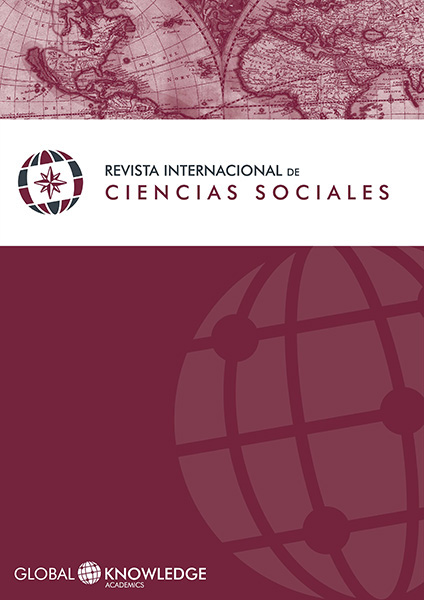Rural Gentrification as a Factor of Persistence of both the original population and agricultural activities: Evidence from Morelos, Mexico
DOI:
https://doi.org/10.37467/gka-revsocial.v3.1132Keywords:
Rural Gentrification, New Rurality, RurbanisationAbstract
This paper is based on research carried out in three municipalities of the state of Morelos, Mexico, where we conducted semi-structured interviews with farmers and rural inhabitants. We address the hypothesis that processes of rural gentrification can incite the persistence of the native population and of agricultural activities through the creation of supplementary sources of work. This hypothesis challenges a part of the literature on gentrification that maintains a rigid notion of gentrification, essentially applicable to situations of urban renovation, and that involves the displacement of the native population with a newly arrived high-income population. In contrast, this paper joins the arguments of another group of researchers that defend a more flexible notion of gentrification, applicable to other geographical areas (peri-urban and rural spaces) and to contexts involving new real-estate developments, where the displacement phenomenon is far from being widespread. Our fieldwork made clear that far from contributing to the displacement of the native population, the influx of high-income groups, be they tourists, temporal or permanent residents, has promoted the creation of local employment opportunities that benefit the local population.
Downloads
Global Statistics ℹ️
|
1652
Views
|
1033
Downloads
|
|
2685
Total
|
|
References
Byrne, P.J. (2003). “Two Cheers for Gentrification”. Howard Law Journal 46(3), 405-432.
Davidson, M. y Lees, L. (2010). “New-Build Gentrification: its Histories, Trajectories, and Critical Geographies”. Population, Space and Place 16, 395-411. DOI: https://doi.org/10.1002/psp.584
Freeman, L. (2005). “Displacement or Succession? Residential Mobility in Gentrifying Neighborhoods”. Urban Affairs Review 40(4), 463-491. DOI: https://doi.org/10.1177/1078087404273341
Freeman, L. (2008). “Testimony of Lance Freeman to The National Commission on Fair Housing and Equal Opportunity”, http://www.prrac.org/projects/fair_housing_commission/atlanta/freeman.pdf (consultado el 24 de marzo de 2014).
Glass, R. (1964). “Introduction: aspects of change”. En: Centre for Urban Studies, London: Aspects of Change (pp. xiii-xlii), Londres: MacKibbon and Kee.
Guimond, L. y Simard, M. (2008). “Néo-ruralité et embourgeoisement des campagnes québécoises: un regard nuancé”. Trabajo presentado en el XLVe Colloque de l’Association de Science Régionale de Langue Française (ASRDLF) , Rimouski, Canadá, agosto de 2008.
Guimond, L. y Simard, M. (2010). “Gentrification and Neo-Rural Populations in the Québec Countryside: Representations of Various Actors”. Journal of Rural Studies 26, 449-464. DOI: https://doi.org/10.1016/j.jrurstud.2010.06.002
Instituto Nacional de Estadística y Geografía. (2010a). Marco Geoestadístico 2010 [Archivo de datos], http://www.inegi.org.mx/geo/contenidos/geoestadistica/m_geoestadistico.aspx (consultado el 24 de marzo de 2014).
Instituto Nacional de Estadística y Geografía. (2010b). Censo de Población y Vivienda 2010 [Archivo de datos]. http://www.inegi.org.mx/est/contenidos/proyectos/ccpv/cpv2010/Default.aspx (consultado el 24 de marzo de 2014).
Lees, L., Slater T. y Wyly, E. (2010). “Introduction”. En: Lees, L., Slater, T. y Wyly, E. (Eds.). The Gentrification Reader (pp. xi-xxiii), Londres y Nueva York: Routledge.
Simard, M. (2007). “Nouvelles populations rurales et conflits au Québec: regards croisés avec la France et le Royaume-Uni”. Géographie, Économie, Société 9(2), 187-213. DOI: https://doi.org/10.3166/ges.9.187-213
Simard, M. (2011). “Transformation des campagnes et nouvelles populations rurales au Québec et en France: une introduction”. Canadian Journal of Regional Science / Revue canadienne des sciences régionales 34(4), 105-114.
Slater, T. (2009). “Missing Marcuse. On gentrification and displacement”. City 13(2), 292-311. DOI: https://doi.org/10.1080/13604810902982250
Vigdor, J. (2001). “Does Gentrification Harm the Poor?” Trabajo presentado en el Brookings-Wharton Conference on Urban Affairs , Washington D.C., octubre de 2001.
Vigdor, J. (2002). “Does Gentrification Harm the Poor? Brookings-Wharton Papers on Urban Affairs, 133-173. DOI: https://doi.org/10.1353/urb.2002.0012
Downloads
Published
How to Cite
Issue
Section
License
Those authors who publish in this journal accept the following terms:
-
Authors retain copyright.
-
Authors transfer to the journal the right of first publication. The journal also owns the publishing rights.
-
All published contents are governed by an Attribution-NoDerivatives 4.0 International License.
Access the informative version and legal text of the license. By virtue of this, third parties are allowed to use what is published as long as they mention the authorship of the work and the first publication in this journal. If you transform the material, you may not distribute the modified work. -
Authors may make other independent and additional contractual arrangements for non-exclusive distribution of the version of the article published in this journal (e.g., inclusion in an institutional repository or publication in a book) as long as they clearly indicate that the work was first published in this journal.
- Authors are allowed and recommended to publish their work on the Internet (for example on institutional and personal websites), following the publication of, and referencing the journal, as this could lead to constructive exchanges and a more extensive and quick circulation of published works (see The Effect of Open Access).













